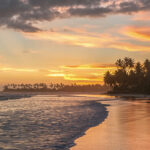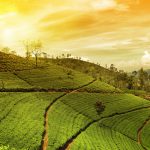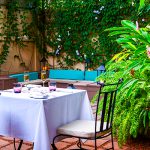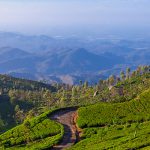INSIDE SRI LANKA A monthly insider’s report by Royston Ellis, October 2014.
Best of the West
From October to March, the beaches on the west coast of Sri Lanka are the best. Whether you like broad strands of sand to jog along at the sea’s edge, soaring waves to surf as they splash on the shore, intimate coves for private sunbathing, or beaches lined with seafood cafés and bars, the beaches along the west coast are amazing, sunny playgrounds for visitors to Sri Lanka.
Being so close to the Equator, Sri Lanka’s seasons are not well defined, and there is no cool winter. The main difference in seasons is caused by the monsoons and it is from October to March (as the winds blow from east to west) that the sun shines daily, the sea is calm and along the west coast the beaches are sandy.
The beaches begin at the Kalpitiya peninsular, embracing the Puttalam lagoon, which is emerging as an eco-compatible resort. For fun with hectic after-beach action close to the airport, Negombo is the choice. The closest beach to Colombo is at Mount Lavinia, 12km south of the city, where locals and tourists happily mingle.
To the south, by train or road, is Kalutara where a prominent landmark is the shining white stupa of the historic Kalutara Bodhiya south of the Kalu Ganga (river). Near the northern bank, the Calido Beach adjoins a thin strip of land that runs between the Kalu Ganga and the Indian Ocean. There are coves along the coast down to Beruwala a small coastal town 58km south of Colombo that has a long stretch of beach as well as a flourishing early morning fish market.
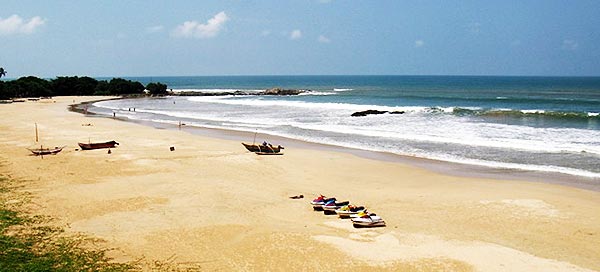
The queen of the west coast beaches is Bentota, famous as a sprawling seaside resort set under an endless canopy of palm trees. It is considered to be the water sport capital of Sri Lanka since it has a large lagoon ideal for all kinds of water sports, and plenty of hotels. To its south, the beach stretch at Induruwa sports independent places to stay, but the sea can be treacherous.
The ultimate beach playground for the young-at-heart is Hikkaduwa, 97km south of Colombo, renowned for its after-beach activities with dozens of small cafés, bars and seafood restaurants.
Memory Walk
People parading along the streets holding placards aloft and chanting slogans from a script are a familiar sight in Colombo, whether they’re students griping or union members protesting. Last month, though, there was a different kind of march, a Memory Walk supporting the work of the Lanka Alzheimer’s Foundation (LAF). This was the 12th Annual Memory Walk of the local charity set up to raise funds and awareness to help those with Alzheimer’s or suffering from dementia.
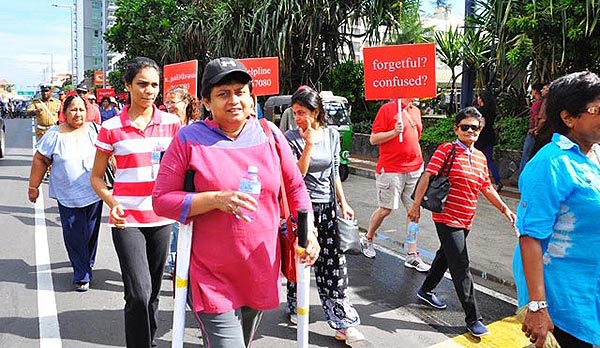
There is little public awareness and a certain amount of stigma in Sri Lanka about having Alzheimer’s or dementia, which a hardworking group of dedicated volunteers is doing its best to address, as well as to provide care for those afflicted and training for carers. From funds raised the members of LAF have built and operate an activity centre at 110 Ketawalamulla Lane, Colombo 10; visitors welcome by arrangement: www.alzlanka.org

Despite the early morning rain, a large number of supporters turned up for the 5-km walk to the Cinnamon Grand Hotel where a treat was provided for the elders whom the LAF supports. A mobile DJ vehicle provided music throughout the walk adding encouragement. At the hotel, placards in the three languages proclaimed the message of the Foundation’s mission.
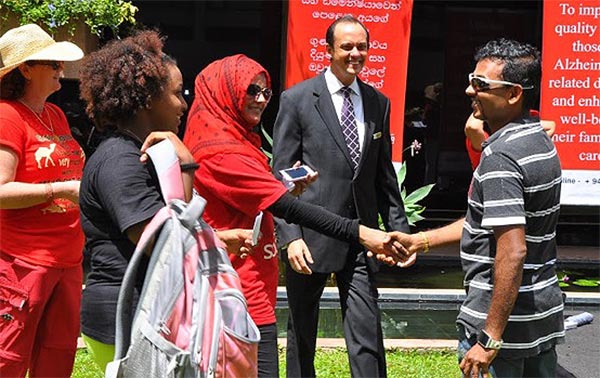
Plus plus
This word, repeated twice, is one you’re going to hear frequently in Sri Lanka. It refers to the additions on hotel and restaurant bills. It is signalled either by a sneaky little footnote in very small print at the bottom of a menu warning that service charge and taxes will be added to the cost of every item. Or the price list simply states ++ (plus plus).
While travellers are accustomed to the compulsory imposition of a service charge (even when the service is lamentable), the addition of a further amount – it can be as much as 17% because of national and local taxes – comes as a surprise. If the service is genuinely commendable, it’s worth pressing an additional 5% (but in cash, not adding it to the credit card chit) into the server’s hand.
A few establishments have realised customers do not like the price of a coffee or cake being billed at nearly 30% more than the menu price, so have adopted the phrase “nett.” This means tips and taxes are included in the quoted price. (But it’s still a good idea to slip a cash tip of up to 5% to the server.)
Yal Devi returns
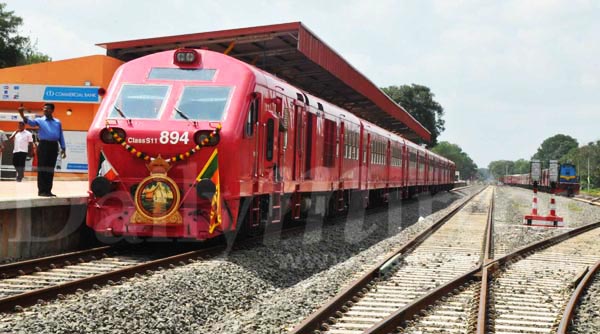
No, this does not refer to the return of a Hindu goddess, but to a famous train, the Yal Devi, that ran from 1956 to 1990 from Colombo to Jaffna in the north. The train was stopped as war raged and the track torn up, but this month Yal Devi resumes service to Jaffna from Colombo via Anuradhapura and Pallai. The destroyed track was re-laid and stations built with assistance from India. The new broad gauge (5’6”) track permits travel at 100kph (62mph). The train leaves Colombo every morning at 05.45 for the 393km (245 miles) run; there is 1st, 2nd & 3rd class accommodation.
A British resident of Sri Lanka since 1980, Royston Ellis is an erstwhile beat poet and author of The Bradt Guide to Sri Lanka. His weekly blog is available by free subscription from www.roystonellis.com
